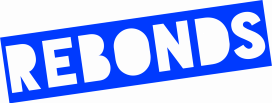How do you go from surveys to tests? Between the May and June 2024 sessions, we “decanted” the lessons gleaned since the beginning of the program on our 8 paradigm shifts, to draw intuitions, pose hypotheses and outline new levers points… to be confronted with the realities of each of the partner territories and administrations, and with the expertise of the agents in charge of economic development, accomplices of the experiment…
Action research, a calculated risk-taker
In particular, the survey enabled us to identify difficulties, blind spots and unthought-of aspects of the business and local economic development policies. For example: “alternative” models are being disseminated, but are not sufficient to transform these policies because the underlying theories are not being discussed; evaluation is too focused on measures and not enough on effects and goals; the vision is often focused on a top-down, rare, international, skilled economy, which struggles to think on a broader basis, taking into account the parts of a more residential, ordinary economy, and so on. the need to rethink support for very small businesses, which are often less well-equipped to deal with the challenges of transition, and often off the radar of local authorities, etc.
We have used these ‘problems’ as the basis for new hypotheses. It’s a creative process, since we’ve formulated our intuitions based on monitoring and design; it’s also the essential stage in a scientific approach: each one is a bias, a refutable proposition, which must be verified and consolidated, and to do so must be testable and measurable. We have formulated them in a series of “What if? What if we helped elected representatives convinced of the need for a paradigm shift to have a greater impact (on their peers, on local economic players, etc.)? What if we relied on intermediary players (large companies, networks, etc.) to help us achieve this? insurers, etc.) to mobilize VSEs/SMEs and increase their impact. ? How about adapting economic development services to make the ordinary economy a priority?…
A test, like a piece to be broken
How can we test the soundness of these hypotheses with each of the territories involved in Rebonds, within a window of 6 to 8 months and an economy of resources? We have narrowed down each of these proposals into ideas that are sufficiently precise and concrete to offer the possibility of a first learning milestone, the opportunity to “learn the most by getting wet the least, while committing to the next step if it’s promising”.
For example, to test the hypothesis of more flexible and agile cooperation frameworks to contribute to inter-territorial relations based on reciprocity, we could experiment with an initial cross-survey, between elected officials to identify the interdependencies and common issues of their territories; this would enable us to verify the degree of compatibility of each other’s visions, and the hypothesis of complementarities as well as the right scale for thinking about them. As another example, to test the hypothesis of a ZAE managed as a common, with the aim of initiating a more collective and ecosystemic management of the land, we could test the drafting of a common management charter between a few companies in a ZAE; this would enable us to identify the first ‘common’, but also the levers for mobilizing companies and cooperating with the public player; etc.
To find all our hypotheses, the inspiration behind them and our test suggestions, click here. It’s a work in progress! These ideas now need to be adopted, shaped and implemented in the context of each community, each of which will carry one or two of them. Stay tuned, but in the meantime, don’t hesitate to get inspired!
A checklist for building tests without getting lost along the way
As we move forward into the experimentation phase with each of the communities, our collective ambition is (modestly) great, and we know that change is often best built quietly and by iteration, we feel it useful to remind you of a few questions and thoughts to keep in mind.
Experimentation means adopting a researcher’s posture… We design an experiment by reproducing a phenomenon in the laboratory, to test a hypothesis by varying different parameters. The aim is to validate (with users) the initial idea, so as to continue developing the project. When designing a test, it’s important to specify what you’re looking to verify from the initial idea, what effects you’d like to produce, and what lessons you’d like to glean.
What degree of transformation are we looking for? Clarifying the test’s collective ambition enables us to gauge expectations: Are we looking to radically transform the system and propose an alternative, or to improve what already exists without changing the underlying vision? If the first proposal seems more desirable but more difficult to achieve, which cursors should be pushed to get there?
A test is not a project or even a pilot! You tinker with something you can try out to see if the idea works, you test it out to gradually identify what might work… But you don’t want to make it permanent afterwards. You need to think about a protected zone (a reasonable exposure, for example), share the experimental posture with colleagues and partners, and announce the test in advance as ephemeral, to encourage lightness and risk-taking.
Experimentation isn’t about success or failure… it’s what we learn that enables us to implement an innovation. It is useful to be prepared to evaluate and document the test, to collect also the collateral, unforeseen effects (has an unforeseen use appeared? created new problems…).
It’s important to think about the economics of testing. What can we try that’s feasible/reasonable, that’s the lightest/cheapest/fastest and at the same time teaches us the most about what we want to experience?
